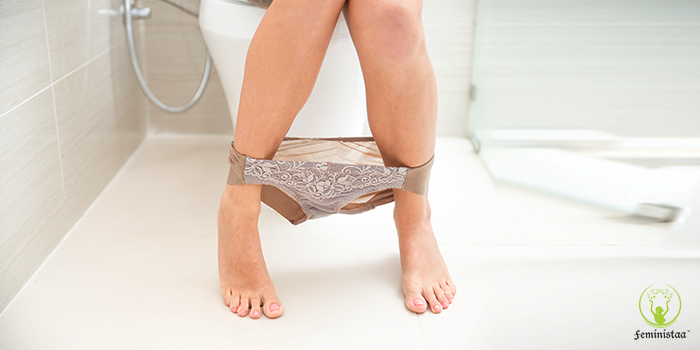“As a womanpreneur, you’re always under an additional pressure to prove your credibility, performance and…
Read More →

“As a womanpreneur, you’re always under an additional pressure to prove your credibility, performance and…
Read More →
“Be as you wish to seem.” If you are trying to do something and put…
Read More →
My journey of becoming an entrepreneur is a sheer serendipity. I had taken a break…
Read More →
Haven’t you gone back to your jewellery box which has your complete collection of earrings, yet, you…
Read More →
The girl who wowed everyone with her amiable smile and flawless bakery skills, Kirti Bhoutika,…
Read More →
CLICK HERE TO WATCH PART 1 Known for her unusual sense of styling, outspoken attitude,…
Read More →
A woman who walks in PURPOSE doesn’t have to chase PEOPLE or OPPORTUNITIES. Her…
Read More →
“Men and Women are not equal, they are different’ – With this hypothesis, Fempowerment Women…
Read More →
Make up is an art form, not everyone can master. It’s more than just applying…
Read More →
Online Start-up space in India is ruled by IT professionals with elaborate degrees and it…
Read More →
“As a womanpreneur, you’re always under an additional pressure to prove your credibility, performance and…
Read More →
“Be as you wish to seem.” If you are trying to do something and put…
Read More →
My journey of becoming an entrepreneur is a sheer serendipity. I had taken a break…
Read More →
Haven’t you gone back to your jewellery box which has your complete collection of earrings, yet, you…
Read More →
The girl who wowed everyone with her amiable smile and flawless bakery skills, Kirti Bhoutika,…
Read More →
CLICK HERE TO WATCH PART 1 Known for her unusual sense of styling, outspoken attitude,…
Read More →
A woman who walks in PURPOSE doesn’t have to chase PEOPLE or OPPORTUNITIES. Her…
Read More →
“Men and Women are not equal, they are different’ – With this hypothesis, Fempowerment Women…
Read More →
Make up is an art form, not everyone can master. It’s more than just applying…
Read More →
Online Start-up space in India is ruled by IT professionals with elaborate degrees and it…
Read More →
“As a womanpreneur, you’re always under an additional pressure to prove your credibility, performance and…
Read More →
“Be as you wish to seem.” If you are trying to do something and put…
Read More →
My journey of becoming an entrepreneur is a sheer serendipity. I had taken a break…
Read More →
Haven’t you gone back to your jewellery box which has your complete collection of earrings, yet, you…
Read More →
The girl who wowed everyone with her amiable smile and flawless bakery skills, Kirti Bhoutika,…
Read More →
Vaginal discharge is any type of secretion released by glands in the vagina and cervix, which carries dead cells and bacteria out of the body, and helps to keep the vagina clean and prevents from infection.
The normal vaginal discharge varies in amount and ranges in color from clear to milky, white discharge. The discharge may have a slight odor but a foul, fishy odor is a sign of an infection. The discharge type can change from time to time and from woman to woman, while some women may not have to face the problem of vaginal discharge at all, but it is completely normal.
Having no discharge is sometimes is a sign that things are not going right. Some of the reasons that can cause estrogen levels to drop, leading to little to no vaginal discharge are:-
The type of Discharge can be identified based on two main categories:
1)DISCHARGE BASED ON COLOR:
a) Clear – It is a slippery egg white-like discharge which is “fertile” mucous and is usually a sign of ovulation. “This is nature’s way of letting you know that this is a great time to get busy if you want to get pregnant, and a great time to protect yourself if you don’t,” says Alyssa Dweck, MD, associate clinical professor at Mount Sinai. Depending on where you are in your ovulation cycle, the discharge may come out a little thicker, but it’s mostly clear. If there are no weird symptoms like itching or a foul odour, it may be an indication to consult a gynaecologist.
b) White – It’s normal discharge before and after periods until it is coming thick and lumpy or accompanied by irritation and itching. If the discharge is thick with the texture of cottage cheese, it is a symptom of yeast infection, which occurs when the levels of yeast in your vagina are off balance. Normal white discharge is never accompanied by itching or irritation. If itching or irritation or burning around the area occurs it can indicate a type of yeast infection.
c) Yellow or Green – Yellow or greenish yellow discharge is an abnormal discharge, which most probably indicates signs of a bacterial infection or sexually transmitted infection (STI’s). There may also be some kind of odor along with it. It is surely an indication to infection, like chlamydia or gonorrhoea – both of which are STDs that require medical treatment, if it is thick or clumpy like cottage cheese or has any type of foul odor.
d) Brown – Brown discharge is normal discharge if it is right after your periods and is a phenomenon of the to “clean out’ the vagina. It’s most likely the leftover blood evacuating the premises. It may also be caused due to irregular period cycles. But if the brown discharge continues, a gynaecologist needs to be consulted for it could be a sign of uterine or cervical cancer.
e) Gray – If there is grey, greyish-white, or greyish-green discharge it is usually accompanied by a strong, foul, it is a classic symptom of a bacterial infection. It is vaginosis, or BV, which is a common but uncomfortable infection caused by an imbalance of the normal flora, the micro-organisms in the vagina. It can be very uncomfortable but is an easily treated infection with a simple antibiotic or antibacterial gel from your doctor.
f) Blood spot – It is a normal phenomenon if it is just before your periods the body is getting ready for periods. It may also occur when you are ovulating/mid-cycle. Sometimes in the early days of pregnancy, spotting or a brownish discharge may occur, at the time your period would normally come. But if it is a random mid-month spotting, or it looks slightly off, it could be a serious problem. It could occur from vaginal infection, a lost tampon, breakthrough bleeding on the pill, an ovarian cyst, something within the uterus like a polyp, ectopic pregnancy, or pregnancy. Because the range of possibilities is very wide, it’s more important to consult a doctor to be able to detect the cause.
2)DISCHARGE BASED ON CONSISTENCY:
a) Thin – Thin, clear discharge is normal discharge that gets thicker as the period dates come closer. Even if it’s a little cloudy, that’s pretty normal too. As long as there is no weird symptoms like itching or foul odor, it’s safe.
b) Thick – “Discharge usually increases in thickness during the second half of your cycle,” Dr. Wyckoff says. If the discharge is not accompanied by anything else,it’s nothing to stress about. But if it’s thick, white, cottage cheese-like discharge, along with itching, redness, irritation and burning, it is a sign of yeast infection which is caused by an overgrowth of fungus in the vagina. Almost 90 per cent of women have a yeast infection at some point of their life. Yeast infections are not contagious, and over-the-counter anti-fungal creams are available for a patient to use. But, if the treatment does not work or it occurs more than four times a year, it is a matter of concern and needs to be attended immediately.
c) Clumpy – When discharge is in lumps which may or may not be accompanied by itchy vadge, irritated labia, or pain when you pee, it is a strong symptom of yeast infection. It may be in cottage cheese-like texture, which occurs when the levels of yeast in your vagina are off balance. However, most yeast infections are easily treatable with medication from the doctor.
For women prone to yeast infections, Dr Dweck recommends avoiding heavily scented personal hygiene products as well as getting out of wet workout clothes and bathing suits immediately.
d) Stretchy or stringy – The stretchy, stringy discharge which is mostly clear or slightly cloudy, is normal discharge which indicates the ovulation period (the slippery texture helps sperm to swim to the cervix). Hence for those trying to get pregnant, it is a good time to try and for those trying to avoid getting pregnant, it’s time to be to be extra, extra careful.
e) Watery – Herpes, is a kind of infection caused by a virus due to which blisters in the vaginal area may occur and can cause some weeping from time to time, leading to a watery, semi-opaque, occasionally blood-tinged discharge. It happens mainly if it is sore on the inside and is a painful experience. Hence, one may know that something is wrong without even noticing the watery discharge. This occurs at different times of your cycle and can be particularly heavy after exercising.
f) Heavy – Discharge usually get heavier as it closes the period cycle but the most common cause of an unusually heavy discharge are birth control pills and IUDs. As long as the discharge is clear or white and has no bad smell, it is normal and nothing to be worried about. It may also occur from an allergic reaction or sensitivity to chemicals. Dr Dweck explains that such a reaction is not dangerous, but the patient should limit their exposure to the harming chemical in the future to avoid irritation.
g) Light – Sometimes occurring really dry, atrophic changes in the discharge can be a signal of perimenopause (the transition phase before menopause) or menopause. In addition to the lighter volume, discharge may also become thin, watery, and somewhat uncomfortable, says Dr Dweck
h) Creamy – A few days or a week before the period, you may start to get a thicker, creamier discharge. Depending on the time of the month, it’s going to change consistency and texture.”
i) Frothy – The frothy discharge which is usually gray or green is a sign of bacterial vaginosis, or BV, caused by an imbalance of the microorganisms in the vagina. It can be treated easily through antibiotics if it is taken care of at the right time
Some women have no discharge at all which is also completely normal given that every woman’s body is different and would behave differently. It is nothing to be concerned about unless there are other symptoms such as irritation that may be of concern and require a doctor’s attention.
“Vaginas are like nose and mouths: they make moisture. But they’re upside down and can’t sniffle or swallow.”
Some ways to prevent these vaginal infections:
1) Eat Right For Right Vagina: According to Dharam Barett, Pumpkin seeds are rich in zinc and vitamin E, which helps maintain regular periods and fight off vaginal irritation and discomfort. Like avocados, nuts and seeds help lubricate the vagina to prevent dryness and also relieve menstrual cramps. Snacking on yoghurt with live cultures helps boost the good and helps prevent annoying vaginal problems like yeast infections.
2) Your Underwear Matters: Wear underwear that isn’t too tight – preferably cotton. Be sure not to leave the same pair on for more than 24 hours. It’s also important to get out of sweaty or otherwise wet panties or bathing suit bottoms as soon as possible so you can dry out. When you put on underwear when your vagina is still damp, you’re locking in all the moisture from your shower in a warm, damp space. This can make bacteria grow more quickly, leading to issues like yeast infections.
3) Keep your pubic hair on, no matter what they say: Pubic hair is an essential protection cover, protecting your vagina from various infections and bacteria. Even though removing pubic hair is a personal preference but it is recommended to always keep your pubic hair short and not remove it completely.
4) Vaginal Health is a Thing: Wash the vaginal area with lukewarm water whenever you use the restroom. This not only helps to wash off the excess urine or any other material adhering to the area, but it also keeps it clean. As with any skin, moisturize, moisturize, moisturize. If you’re sexually active, then it is essential that you visit the gynaecologist. Having regular gynaecological exams is crucial to maintaining your vaginal health. Every woman should have her first gynaecological exam by age 21 or within three years of becoming sexually active.
© Feministaa 2024 Media Pvt. Ltd. All rights reserved


